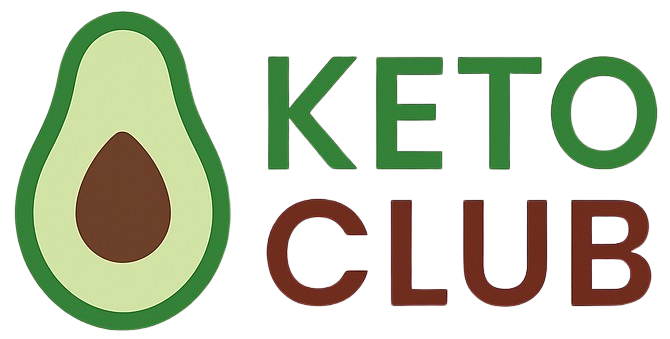The ketogenic diet has gained massive popularity for its ability to burn fat, stabilize blood sugar, and enhance mental clarity. But if you’re someone who exercises regularly—or is planning to start—you might wonder: How do workouts fit into a low-carb, high-fat lifestyle?
Many people are concerned that keto might hurt their performance in the gym, especially during high-intensity training. However, with the right strategies, the keto diet can complement your workouts, boost endurance, and help you build a lean, strong physique.
This article breaks down how the keto diet affects different types of exercise, how to fuel your body before and after a workout, and what to avoid if you want to perform at your best while staying in ketosis.
Understanding the Basics: Keto and How It Changes Fuel Sources
Under normal circumstances, your body relies on glucose (from carbohydrates) as its main energy source—especially during intense physical activity. When you eat a typical diet with lots of carbs, your body stores glucose as glycogen in your muscles and liver. During exercise, your body taps into these glycogen stores for quick energy.
The keto diet flips this system upside down.
By drastically reducing carbohydrate intake (usually below 50 grams per day), your body enters a state called ketosis. In ketosis, your liver converts fats into ketones, which your body then uses for fuel instead of glucose.
This shift in metabolism offers some unique benefits, especially for endurance athletes. But it also comes with challenges—particularly when it comes to short, intense workouts that typically rely on fast-burning glucose.
How Keto Affects Different Types of Exercise
1. Endurance Training (Running, Cycling, Swimming)
This is where the keto diet really shines.
Once fully fat-adapted (which can take 3–6 weeks), your body becomes incredibly efficient at burning fat for energy. Since even the leanest people have tens of thousands of calories of stored fat, this becomes a nearly unlimited fuel source for long-distance efforts.
Benefits for endurance athletes:
- Reduced dependence on energy gels or carb loading
- Fewer energy crashes
- Improved mitochondrial efficiency
- Lower inflammation and faster recovery
Many ultra-marathoners and long-distance cyclists use a keto or low-carb approach specifically for these advantages.
2. High-Intensity Workouts (Sprints, CrossFit, HIIT)
These types of workouts rely on quick bursts of energy, which your body typically gets from glycogen. On a strict keto diet, glycogen levels are lower, which can affect performance during high-intensity efforts.
However, with strategic tweaks (like targeted keto, which we’ll discuss shortly), you can still perform well during intense training.
3. Strength Training and Muscle Building
Keto is not ideal for everyone trying to gain mass quickly, but it can work if you’re patient and strategic. You may not get the same muscle “pump” without carbs, but many keto-adapted lifters report increased strength and better fat-to-muscle ratio over time.
Types of Keto Approaches for Active People
To tailor keto for your fitness goals, consider one of these variations:
1. Standard Ketogenic Diet (SKD)
This is the most common version: 70–75% fat, 20–25% protein, and 5–10% carbs. Great for general health, fat loss, and endurance workouts. Less ideal for intense lifting or sprinting.
2. Targeted Ketogenic Diet (TKD)
This involves eating a small amount of carbs (usually 20–50g) 30–60 minutes before your workout. The idea is to give your body enough glucose to support high-intensity efforts while still staying in ketosis the rest of the day.
Best for: CrossFit, HIIT, heavy lifting.
3. Cyclical Ketogenic Diet (CKD)
This approach involves eating low-carb for 5–6 days and then reintroducing carbs for 1–2 days (also called “refeed” days). It’s popular among bodybuilders who want to maintain muscle while staying lean.
Best for: Athletes who need occasional glycogen boosts.
Pre-Workout Nutrition on Keto
What you eat before a workout matters, especially on a low-carb diet. You want enough fuel to perform without knocking yourself out of ketosis.
Good pre-workout options:
- A small handful of nuts and MCT oil
- A bulletproof coffee (coffee + grass-fed butter + MCT oil)
- A boiled egg with avocado
- Keto pre-workout supplements with electrolytes and ketones
If you’re doing intense workouts, a targeted keto approach with 20–30g of fast-digesting carbs (like a banana or rice cake) before training can help.
Post-Workout Recovery on Keto
After training, your body needs nutrients to repair muscle and replenish lost electrolytes. On keto, recovery looks a bit different than the traditional protein shake and carbs.
Post-workout tips:
- Consume 20–30g of high-quality protein (whey isolate, eggs, or collagen)
- Include healthy fats (like olive oil or nut butter) if you’re still hungry
- Replenish electrolytes—especially sodium, potassium, and magnesium
- Stay hydrated
You don’t need a lot of carbs to recover—especially if the goal is fat loss or metabolic efficiency. Your body will adapt to using ketones and fat to rebuild energy stores.
Common Mistakes to Avoid
- Starting Intense Workouts Too Soon
During the first few weeks of keto, your body is adjusting. You may feel fatigued or weak. It’s best to scale back workouts initially until you’re fully fat-adapted. - Not Getting Enough Electrolytes
Keto causes you to lose water and electrolytes faster. This can lead to cramps, fatigue, and “keto flu.” Make sure to supplement with sodium (salt), potassium, and magnesium—especially if you’re sweating during workouts. - Eating Too Little Protein
Some keto followers fear that too much protein will kick them out of ketosis. But if you’re training, your body needs adequate protein to recover and build muscle. Aim for 1.2 to 2.0 grams of protein per kg of body weight, depending on intensity and goals. - Overeating Fat
Fat is your primary fuel source on keto, but if your goal is weight loss, you don’t want to eat more fat than you burn. Think of dietary fat as a lever: you want just enough to support energy and satiety—no more. - Ignoring Biofeedback
If your workouts start to suffer or you feel worse over time, reassess. Some people thrive on keto for training, while others need more carbs. Track your performance and adjust accordingly.
Supplements That Can Help
- Creatine – Supports strength and high-intensity performance
- Beta-Alanine – Helps buffer acid in muscles during intense exercise
- BCAAs or EAAs – Can support muscle retention and recovery (though not always necessary with enough protein)
- Exogenous Ketones – May help boost mental focus and energy during workouts
- Electrolyte blends – Crucial for hydration and performance on keto
Conclusion: Yes, You Can Train Hard on Keto
The keto diet doesn’t mean sacrificing performance—it just requires a different approach.
If you’re an endurance athlete, keto may even enhance your ability to go longer and recover faster. If you’re focused on strength or high-intensity training, tweaking your approach with targeted carbs or cyclical refeeding can make all the difference.
Listen to your body, fuel it wisely, and give yourself time to adapt. With consistency, the keto lifestyle can help you not only look better but perform better—in and out of the gym.
Key Takeaways:
- Keto shifts your body to burn fat and ketones instead of carbs.
- It supports endurance training well but may require tweaks for intense workouts.
- Consider TKD or CKD for high-performance training.
- Electrolytes, protein, and hydration are key to recovery on keto.
- Adjust based on your body’s feedback and performance.
With the right strategy, keto and exercise can be a powerful combination for long-term health, performance, and fat loss.


